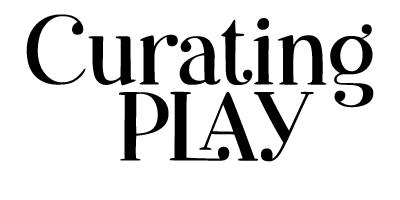While Bev Bos wrote this book in 1990, “together we are better” is a mantra that we can echo still today in the world of early childhood. While Bev’s focus was on inclusive and collaborative classroom environments for young children, this month we are taking a more adult centered focus on creating those environments for children on a larger scale.
Our Standing on the Shoulders section this month focuses on Kathy Hirsh-Pasek, a strong supporter of community-based play spaces and one of the authors of the 2019 article Playful Learning Landscapes: Creating skill building experiences in community spaces. The key points in the article are:
- Community Involvement: Listening to community needs and incorporating their feedback is essential to ensure both buy-in and sensitivity to cultures and needs in the community.
- Partnership with Local Organizations: Collaborating with agencies and organizations can bring in supporters, workers, funding and provides the connections for successful completion.
- Community Ambassadors: Training and using local people for oversight and data gathering and observations ensures that there is a community driven impact of the partnership.
- Sustained Community Leadership: When local partners take the initiative in the partnership, successful outcomes and transformation of neighborhoods result. A longer-term impact can happen when there is sustained community participation.
- Educational Collaborations: Local institutions (school districts, higher education institutions, play focused companies and groups) can provide support for programming (camps, museums, read alongs) as well as implementation of play experiences and activities.
There are so many options if we take a few moments to consider the possibilities. As you examine the people you come in contact with everyday as potential partners, reflect not only on how they can help you, but also on what you and your organization, agency, school or family can offer them. Keeping a partnership balanced is a strong indicator of success.
When you have the opportunity to enter into a conversation with potential partners, these are some important questions to include:
- What are the benefits of a partnership for your organization/group?
- From a community perspective, what would be different because you entered into a partnership?
- What are some challenges that you can envision and how might those be met and overcome?
- What supports would need to be in place to overcome unexpected challenges?
- How could collaboration be encouraged between entities?
- How would accountability be ensured?
- How can licensing or other requirements (if applicable) be coordinated and how might differing requirements affect the partnership?
- What advice would be helpful for the partnership and where might that be found?
Late in February I had the distinct privilege of facilitating a panel discussion at the annual symposium Texas Association of Administrators and Supervisors of Programs for Young Children (TAASPYC). The topic of our conversation was on early learning partnerships with a variety of participants who shared great ideas and suggestions. The group in Ector county (Texas) who came together to create wonderful education services for children included the local YMCA, the county school district, the Partnerships Director from a large program in Dallas, an early childhood non-profit leader and a representative from the state office of Early Childhood Education. This group shared their struggles and challenges, their successes and ways they worked together and offered options for resources and support to the audience.
This panel was an incredible example of community advocates for play and service for young children coming together to make a difference. It was not a quick process not was the road always smooth, but “together they were better” and they did it! I hope that the diversity in this panel encourages you to seek out others in your community and, if you don’t know where to start, that you can find someone to ask!
Molly A. Schlesinger & Kathy Hirsh-Pasek (2019) Playful Learning Landscapes: Creating skill-building experiences in community spaces, Childhood Education, 95:4, 3-9, DOI: 10.1080/00094056.2019.1638704





